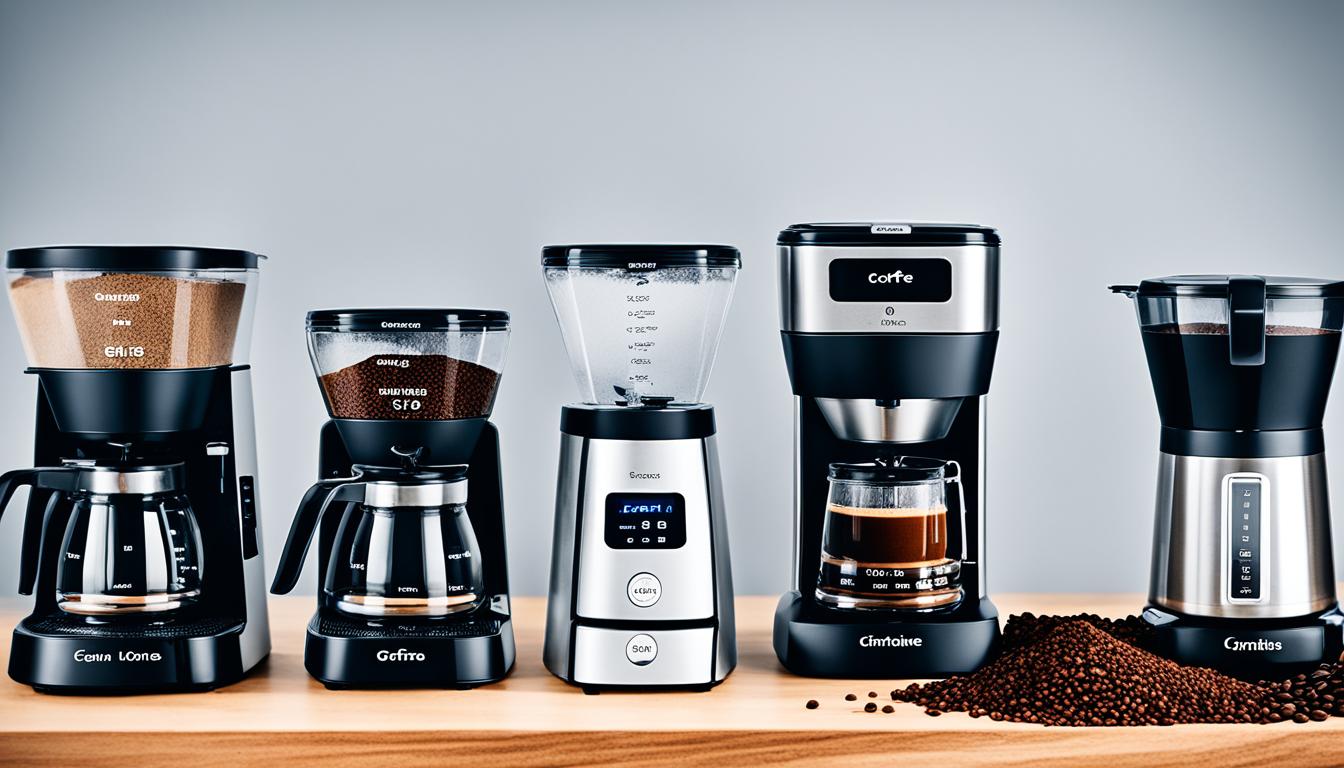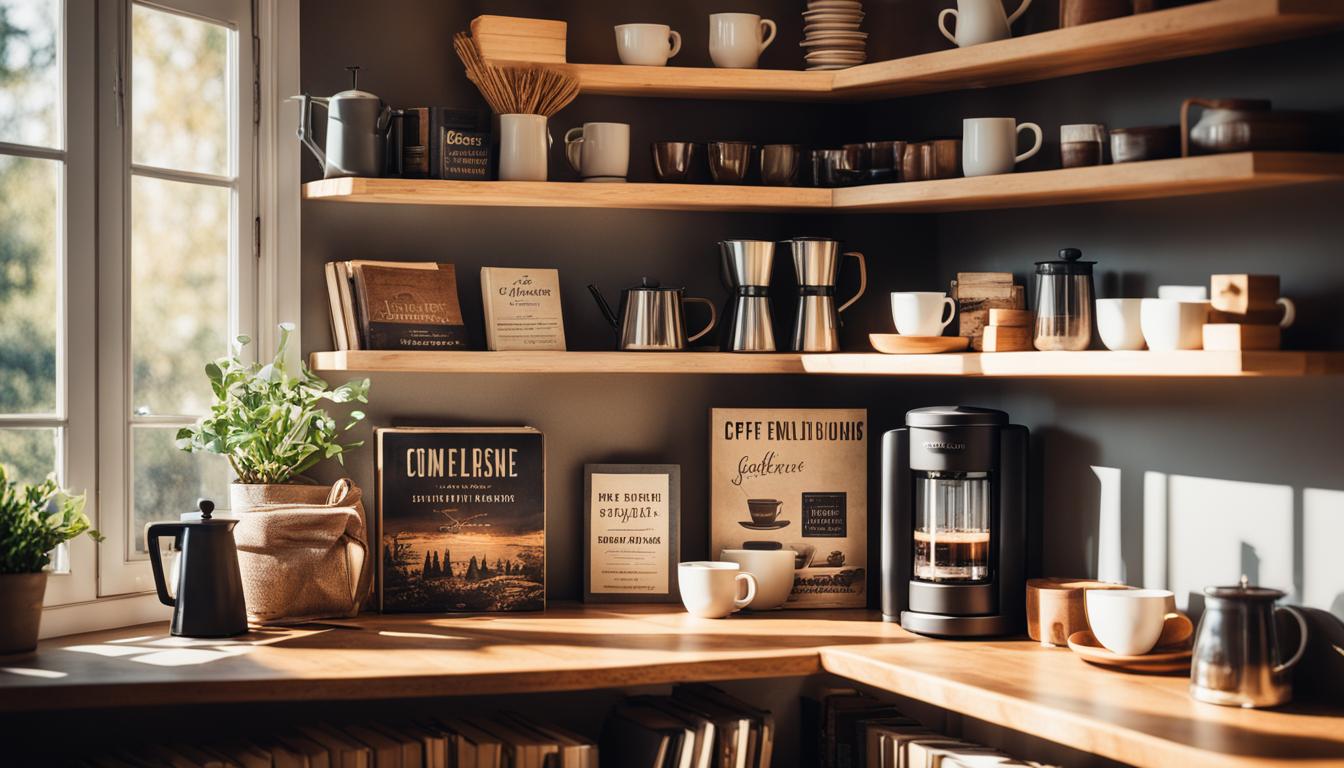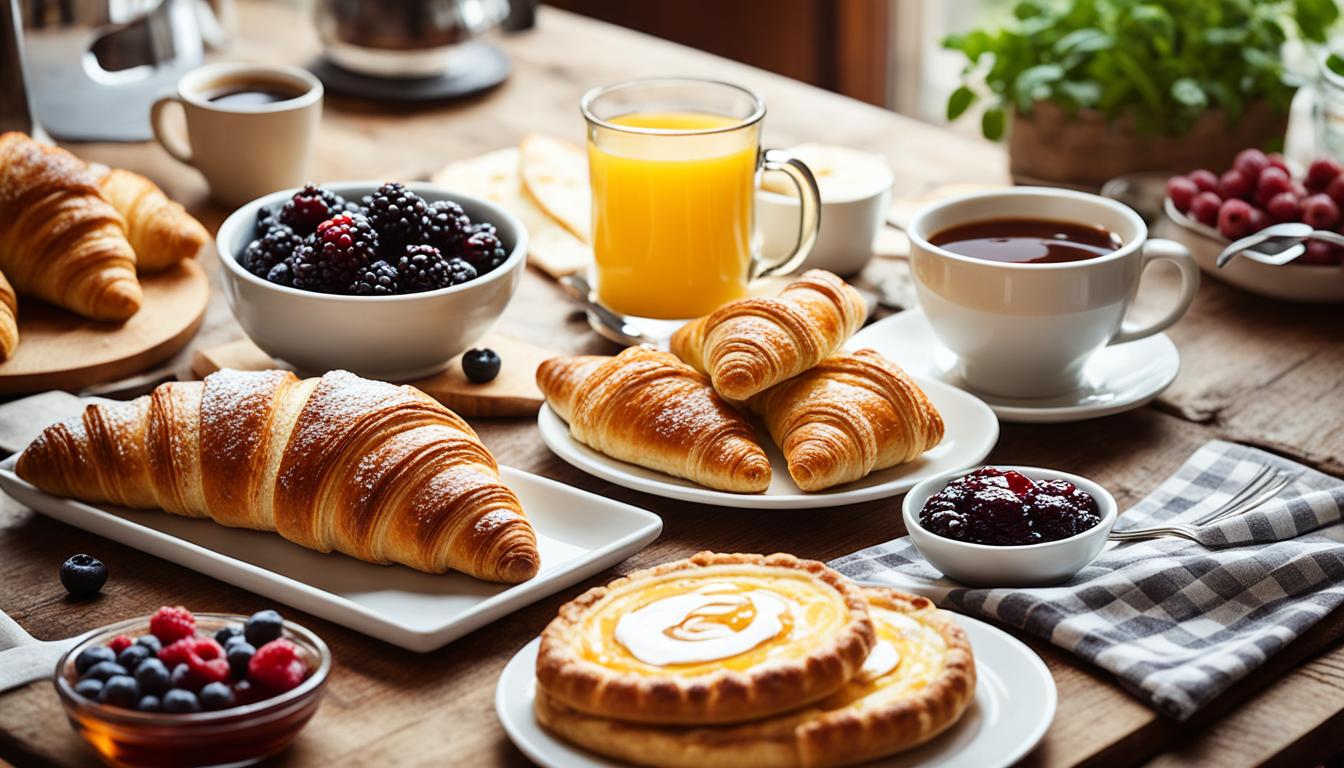Welcome to our comprehensive guide on mastering coffee grind sizes, where we’ll take you on a journey into the world of grinding coffee beans. Understanding the importance of grind consistency is the key to brewing that perfect cup of coffee. From the different types of grind sizes to the best practices for each brewing method, we’re here to help you elevate your coffee game.
Key Takeaways:
- Consistency in coffee grind size is crucial for achieving the desired flavor and aroma.
- There are different grind sizes suited for specific brewing techniques, from fine espresso to coarse French press grind.
- Each brewing method requires a specific grind size to ensure optimal extraction and flavor.
- Proper grinding techniques can unlock the full flavor potential of your coffee beans.
- With our guide as your essential resource, you’ll be able to consistently achieve the ideal grind size for your preferred brewing method.
Importance of Coffee Grind Consistency
Consistency in coffee grind size plays a crucial role in determining the flavor, aroma, and overall quality of your brewed coffee. Achieving the perfect grind consistency is essential for unlocking the full potential of your coffee beans. Let’s explore why grind consistency is important and how it affects the extraction process.
When coffee beans are ground, their surface area increases, allowing hot water to extract soluble compounds and flavors. The rate of extraction depends on the size of the coffee grounds. Different brewing methods require specific grind sizes to optimize the extraction process and produce a well-balanced cup of coffee.
Grind consistency impacts the rate of extraction. If the grind size is too fine, the water will extract too much and quickly, resulting in over-extraction and a bitter taste. On the other hand, if the grind size is too coarse, the water will not extract enough, leading to under-extraction and a weak, flavorless brew.
Consistency is key when it comes to grinding coffee beans. It ensures that each coffee particle extracts an equal amount of flavor, allowing for a balanced and harmonious cup of coffee.
Now that you understand the importance of coffee grind consistency, let’s explore how to grind coffee beans to achieve the perfect grind size for your preferred brewing method. The process of grinding coffee beans can be easily done with a coffee grinder, whether it’s a manual hand grinder or an electric grinder.
Start by adjusting the grind size settings on your coffee grinder according to the brewing method you will be using. If you’re unsure of the ideal grind size for your chosen brewing method, refer to the recommendations in our upcoming section on “Types of Coffee Grind Sizes.”
Next, measure the desired amount of whole coffee beans based on the brewing ratio you prefer. Load the beans into the grinder and ensure it is securely closed. Grind the beans for a consistent amount of time to achieve an even grind size.
Remember, practice makes perfect. Experiment with different grind sizes and brewing methods to find the combination that suits your personal preference. With time, you’ll develop a discerning palate and master the art of grinding coffee beans to perfection.
Benefits of Coffee Grind Consistency
- Enhances the overall flavor and aroma of the coffee
- Improves extraction efficiency for a well-balanced brew
- Allows for better control over brewing parameters
- Ensures repeatability and consistency in each cup
- Maximizes the utilization of coffee beans
Now that you understand why coffee grind consistency is crucial, it’s time to explore the different types of coffee grind sizes and their recommended uses. Our comprehensive grind size chart will provide you with the necessary guidance to brew your coffee with precision and expertise.
Types of Coffee Grind Sizes
When it comes to brewing the perfect cup of coffee, the right grind size is essential. Different brewing methods require specific grind sizes to achieve optimal flavor extraction. In this section, we will explore the various types of coffee grind sizes and provide a detailed grind size chart to help you find the ideal grind for your preferred brewing technique. Whether you enjoy a bold espresso shot or a smooth French press brew, understanding the characteristics and ideal uses of each grind size is crucial.
Below is a comprehensive grind size chart that will serve as your go-to resource for coffee grinding:
| Grind Size | Characteristics | Ideal Uses |
|---|---|---|
| Extra Fine | Similar to powdered sugar | Turkish coffee |
| Fine | Slightly coarser than extra fine | Espresso |
| Medium | Similar to sand | Drip brewing (pour-over, Aeropress) |
| Coarse | Larger particles, like sea salt | French press |
Adjusting your coffee grinder settings according to the desired grind size is crucial for achieving the perfect cup of coffee. Experiment with different grind sizes to find the best match for your brewing method and taste preferences. Remember, even small adjustments can make a significant difference in the flavor and overall quality of your coffee.
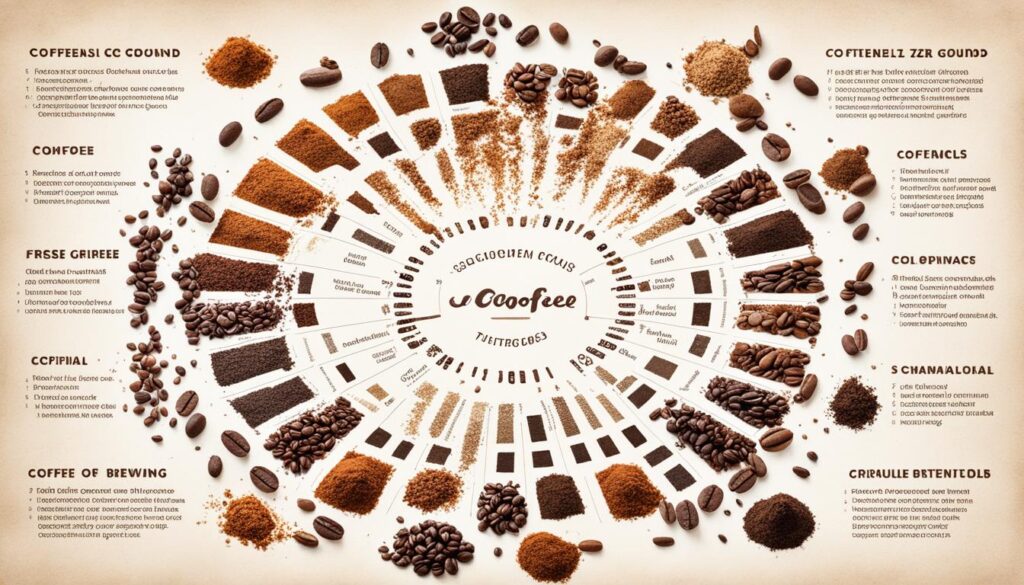
Explore the grind size chart image above for a visual representation of the different coffee grind sizes.
Brewing Techniques and Recommended Grind Sizes
When it comes to brewing coffee, the right grind size is crucial to achieving optimal extraction and flavor. Different brewing methods require different grind sizes to bring out the best in your beans. In this section, we’ll explore popular brewing techniques and provide recommended grind sizes for each method.
Drip Brewing
Drip brewing is one of the most common methods for making coffee. It involves pouring hot water over ground coffee beans held in a filter. For drip brewing, a medium grind size is recommended. This allows for a balanced extraction, producing a clean and flavorful cup of coffee. A medium-coarse grind can also work well for certain drip brewing devices.
Pour-Over
Pour-over is a manual brewing method that involves pouring water over coffee grounds in a controlled manner. It allows for greater control over the brewing process and results in a clean and nuanced cup of coffee. To achieve the best results with pour-over, a medium-fine to medium grind size is recommended. This allows for a slower flow rate and optimal extraction of flavors.
Espresso
Espresso is a concentrated and robust coffee brewing method that requires finely ground coffee. The grind size for espresso is much finer compared to other brewing methods. This fine grind allows for a shorter brewing time and the extraction of intense flavors. If the grind is too coarse, the water will pass through too quickly, resulting in a weak and under-extracted espresso shot.
French Press
French press brewing is known for its full-bodied and rich flavor. It involves steeping coarsely ground coffee in hot water and then pressing down a plunger to separate the coffee grounds from the brew. For French press, a coarse grind size is recommended. This allows for a longer steeping time and a fuller extraction of flavors.
By understanding the recommended grind sizes for each brewing method, you can ensure that your coffee is brewed to perfection. Experimenting with different grind sizes and techniques will allow you to tailor the taste and texture of your coffee to your liking.
See the table below for a quick reference on recommended grind sizes for various brewing methods:
| Brewing Method | Recommended Grind Size |
|---|---|
| Drip Brewing | Medium |
| Pour-Over | Medium-Fine to Medium |
| Espresso | Very Fine |
| French Press | Coarse |
Grinding Tips and Techniques
Now that you understand the importance of grind size and its relationship to brewing methods, let’s dive into the practical aspects of grinding coffee beans. Whether you’re using a manual grinder or an electric grinder, we have some expert tips and techniques to help you achieve consistent grind sizes and unlock the full flavor potential of your coffee beans.
The Basics of Grinding Coffee Beans
Before we get into the tips and techniques, it’s crucial to understand the basic process of grinding coffee beans. Here’s a step-by-step guide:
- Start by selecting the right grind size for your brewing method. Refer to our comprehensive grind size chart for guidance.
- Measure the desired amount of whole coffee beans.
- Adjust your grinder settings according to the recommended grind size for your brewing method.
- Pour the coffee beans into the grinder hopper.
- Start grinding and ensure that the grounds are uniform in size.
- Collect the coffee grounds in a container or directly into your brewing device.
Expert Tips for Consistent Grind Sizes
To achieve the best results with your coffee grinder, consider the following tips:
- Invest in a high-quality grinder: A well-designed grinder with consistent grind particle size distribution will greatly enhance your brewing experience.
- Grind in batches: It’s best to grind coffee in small batches to maintain freshness and ensure an even grind.
- Avoid overheating the grinder: Continuous grinding can generate heat that affects the flavor of the coffee. Take breaks during the grinding process to avoid overheating the grinder.
- Experiment and refine: Different brewing methods and personal preferences may require slight adjustments in grind size. Take the time to experiment and fine-tune your settings to achieve the perfect cup of coffee.
Remember, consistency is key when it comes to grind size. Aim for uniform grounds to achieve optimal flavor extraction and brew perfection.
Manual Grinding Techniques
If you’re using a manual grinder, follow these techniques for consistent results:
- Choose the right grind size: Adjust the grinder settings to achieve the desired consistency. Remember to refer to our grind size chart for guidance.
- Apply steady pressure: When grinding, maintain a consistent and firm grip on the grinder to ensure a uniform grind.
- Use a circular motion: Rotate the handle in a circular motion while grinding to distribute the beans evenly.
Electric Grinder Techniques
If you’re using an electric grinder, these techniques will help you achieve consistent grind sizes:
- Set the timer: Use the timer feature on your electric grinder to ensure a consistent grind size every time.
- Grind in short bursts: Instead of grinding continuously, pulse the grinder in short bursts to achieve a more uniform grind.
- Clean your grinder regularly: Regular cleaning prevents build-up and ensures optimal performance from your electric grinder.
With these grinding tips and techniques, you’re well on your way to brewing the perfect cup of coffee. Practice and experimentation will further refine your skills, so don’t be afraid to explore and discover your favorite grind size for each brewing method.
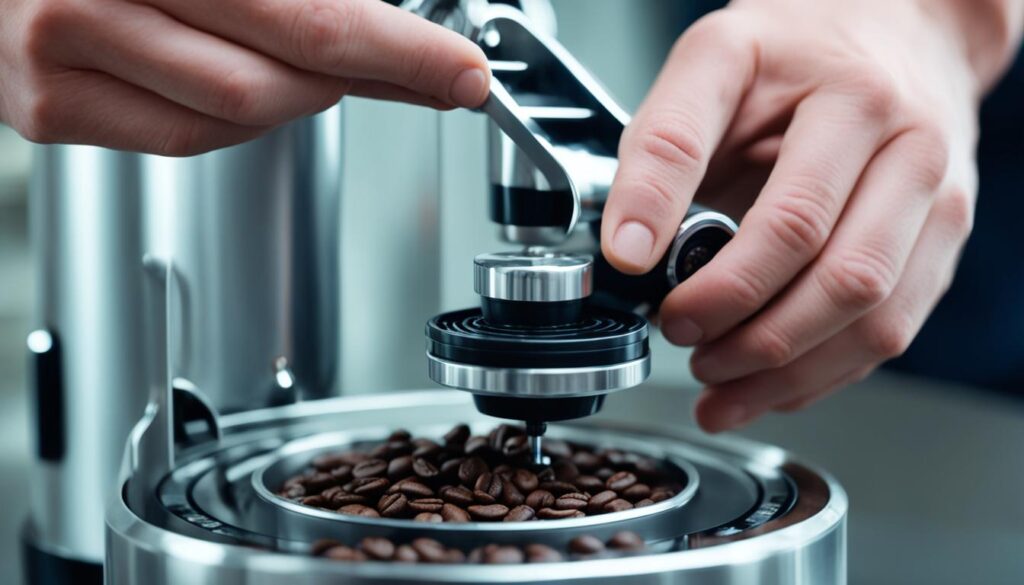
Conclusion
In conclusion, mastering coffee grind sizes is essential for achieving the perfect cup of coffee. Understanding the different grind sizes and their recommended uses, as well as implementing proper grinding techniques, can elevate your coffee brewing experience.
With our comprehensive guide as your essential resource, you’ll be able to consistently achieve the ideal grind size for your preferred brewing method. Whether you enjoy a bold espresso or a smooth French press, the right grind size will unlock the full flavor potential of your coffee beans.
Remember to experiment and fine-tune your grind size to suit your personal taste preferences. Practice makes perfect, and with time and experience, you’ll become a master at grinding coffee beans and brewing exceptional cups of coffee. Start your journey to coffee perfection today!
FAQ
What is the importance of coffee grind consistency?
Consistency in coffee grind size is crucial for achieving the desired flavor, aroma, and overall quality of your coffee. The right grind consistency ensures proper extraction during the brewing process, resulting in a balanced and flavorful cup of coffee.
What are the different types of coffee grind sizes?
There are various grind sizes that cater to different brewing techniques. A fine espresso grind is ideal for espresso machines, while a coarse French press grind is perfect for a full-bodied, sediment-free cup of coffee. A grind size chart can provide you with detailed information on different grind sizes and their recommended uses.
Which grind size should I use for different brewing methods?
The recommended grind size depends on the brewing method you’re using. For drip brewing, a medium grind is typically recommended. Pour-over methods often require a slightly coarser grind. Espresso requires a fine grind, while French press needs a coarse grind to allow for a longer extraction time. It’s important to match the grind size to your brewing method for optimal flavor and extraction.
How do I grind coffee beans properly?
Grinding coffee beans properly involves using the right technique and adjusting your coffee grinder settings accordingly. For manual grinders, you’ll need to adjust the settings based on your desired grind size. Electric grinders often have preset grind settings to choose from. It’s important to follow the guidelines provided by your grinder manufacturer and make adjustments as needed to achieve the desired grind size.
How does grind size impact the coffee brewing process?
Grind size has a direct impact on the coffee brewing process. Finer grinds extract more quickly, resulting in a stronger and more intense flavor. Coarser grinds extract more slowly, producing a milder and smoother cup of coffee. The wrong grind size can lead to under-extraction or over-extraction, affecting the overall taste and quality of your brew.

